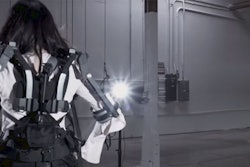As new, disruptive technologies crop up across industries, so do new business models that carry the potential to transform sectors that have remained relatively unchanged for decades. In manufacturing, for example, the traditional line of thinking is: “if it’s not broken, why fix it,” but industry leaders are beginning to discover new business models that bring groundbreaking approaches to life for process and business effectiveness, and fresh revenue streams for industrial companies.
Manufacturing companies can take a cue from such digital disruptors such as Uber and Airbnb, which have developed innovative strategies that rely on the availability of data to provide instant services for customers. With increased adoption of digital technologies, and the advent of the Industrial Internet of Things (IIoT), manufacturers can leverage enhanced connectivity at every level of their operations to make both machines and processes smarter than ever before.
Smart Technologies: A New World of Possibilities
With the high availability of big data, connected machines and insights from analytics tools, industrial companies have new means to make better decisions across all levels of production processes. While the speed of production is now a given, today’s packaging and material handling machines and processes must be hyper connected to ensure optimal performance and production output. Connectivity between machines is vital to the effectiveness of the entire process, but machines must also be connected to systems, like enterprise resource planning (ERP) systems, to give businesses better visibility into maintenance and diagnostics, customer demand and production output. This level of connectivity allows manufacturers to uncover new ways to gain maximum efficiency, drive costs down, save materials, schedule orders, etc., which presents opportunities to shift how services are offered to customers.
New Business Models and Transformation
IIoT has the potential to help manufacturers uncover inefficiencies and transform not just behind-the-scenes processes but also how they can more effectively offer solutions to customers. Take a machine builder, for example, who previously would have provided customers with machines and perhaps a maintenance contract to cover any repairs. With a new model, real-time data about the machine, the entire machine line or a specific process within the factory is transparently available to the end user, OEM or automation supplier. This completely turns the way maintenance services have traditionally been delivered on its head. Machine builders can also now provide access to real-time data about a specific machine or machine line — or the entire process across a factory — and send it to the end user, OEM or automation supplier, transforming the way services are utilized and delivered.
Even further down the nontraditional spectrum of business models is the pay-per-use approach, which forms the basis for the car rental industry. Similar to this approach, instead of manufacturers maintaining ongoing responsibility for owning and maintaining assets, companies would simply pay for the availability of the machine as they need it. With this model, machine builders would rely on data to manage the availability of machines and match production capacity to market demands. While this presents vast opportunity to dramatically shift how machines are acquired, used and maintained, the industry must first take a few things into account to ensure success, which include:
- All products and systems are connected: Companies should leverage IoT, mobile, sensing, cloud, analytics and cybersecurity technologies to deliver connectivity, edge control, analytics and associated services for all aspects of an operation.
- Edge control is incorporated across the process: By doing so, users can effectively control the machine that collects data and acts as a gateway to deliver information to the cloud. When all controllers have this layer of cloud connectivity, analytics capabilities must be incorporated so users can gain better insight into their operations.
IIoT in Action
While IIoT can feel abstract and futuristic, industrial companies are already reaping the benefits. Entrade, an OEM that builds micro power plants that are housed within shipping containers, successfully flipped its business model using IIoT. While the company initially planned to sell its micro plants, it decided to shift from selling machines to selling the energy output. Through a smart machine solution that leveraged the connective power of IIoT, Entrade was able to successfully sell the availability of its machines to deliver power to users over a set period of time. This success was dependent on the company’s ability to remotely access, monitor and control their machines to disperse to their customers from anywhere in the world. With an enterprise server and dashboard, customers can remotely manage their power plants, which enables them to continue to grow their businesses around the world.
For an industry that has traditionally remained unchanged for years at a time, the influx of new connected technologies has uncovered business models that make it possible for companies to improve their operations and generate new revenue streams. On the other hand, the evolution to new business models can sometimes create technological developments by creating intense demand from customers. In either case, only the companies that embrace technology will uncover greater opportunities for business growth.
Ashish Patwardhan is Segment Manager of OEM Industry Business at Schneider Electric.






















